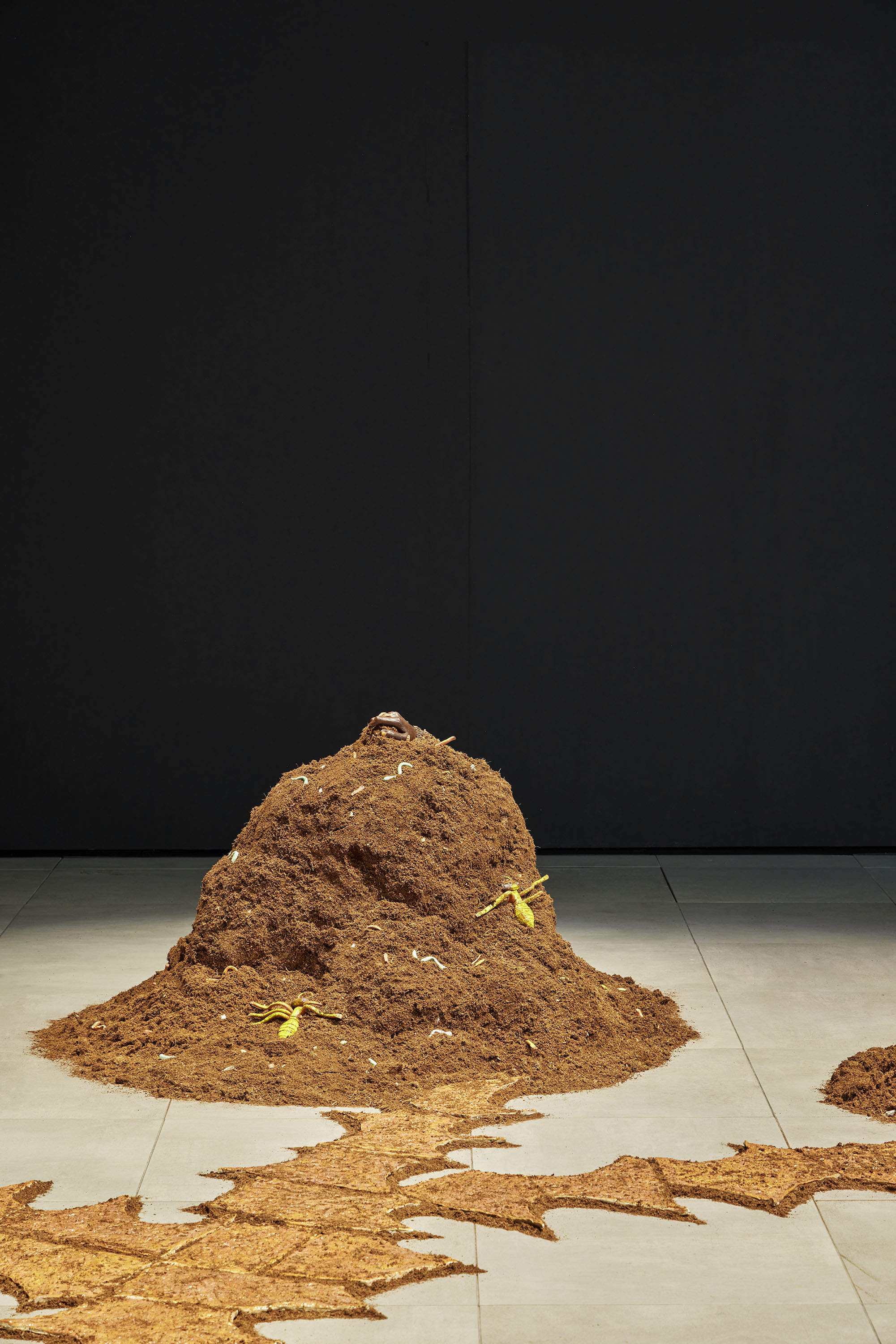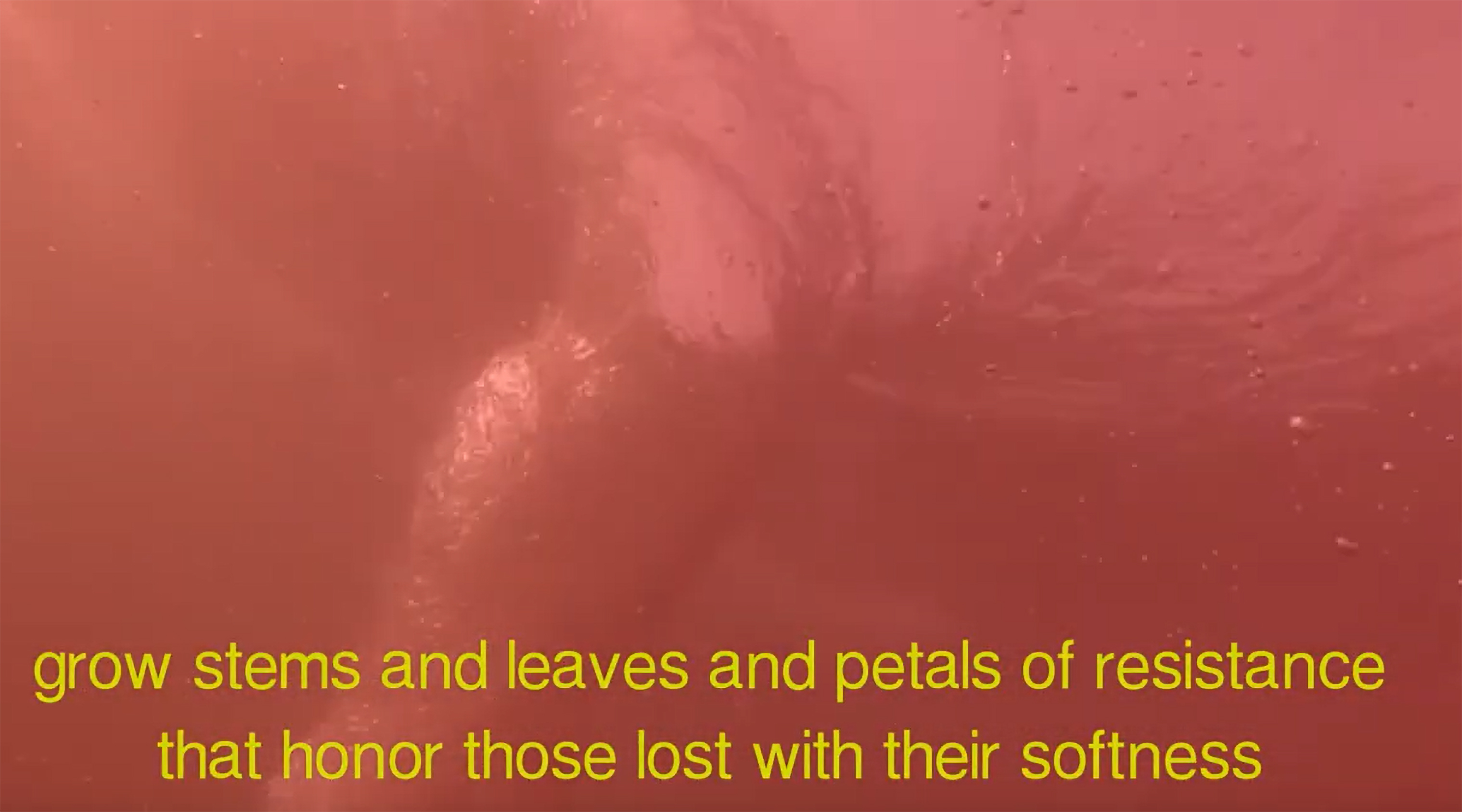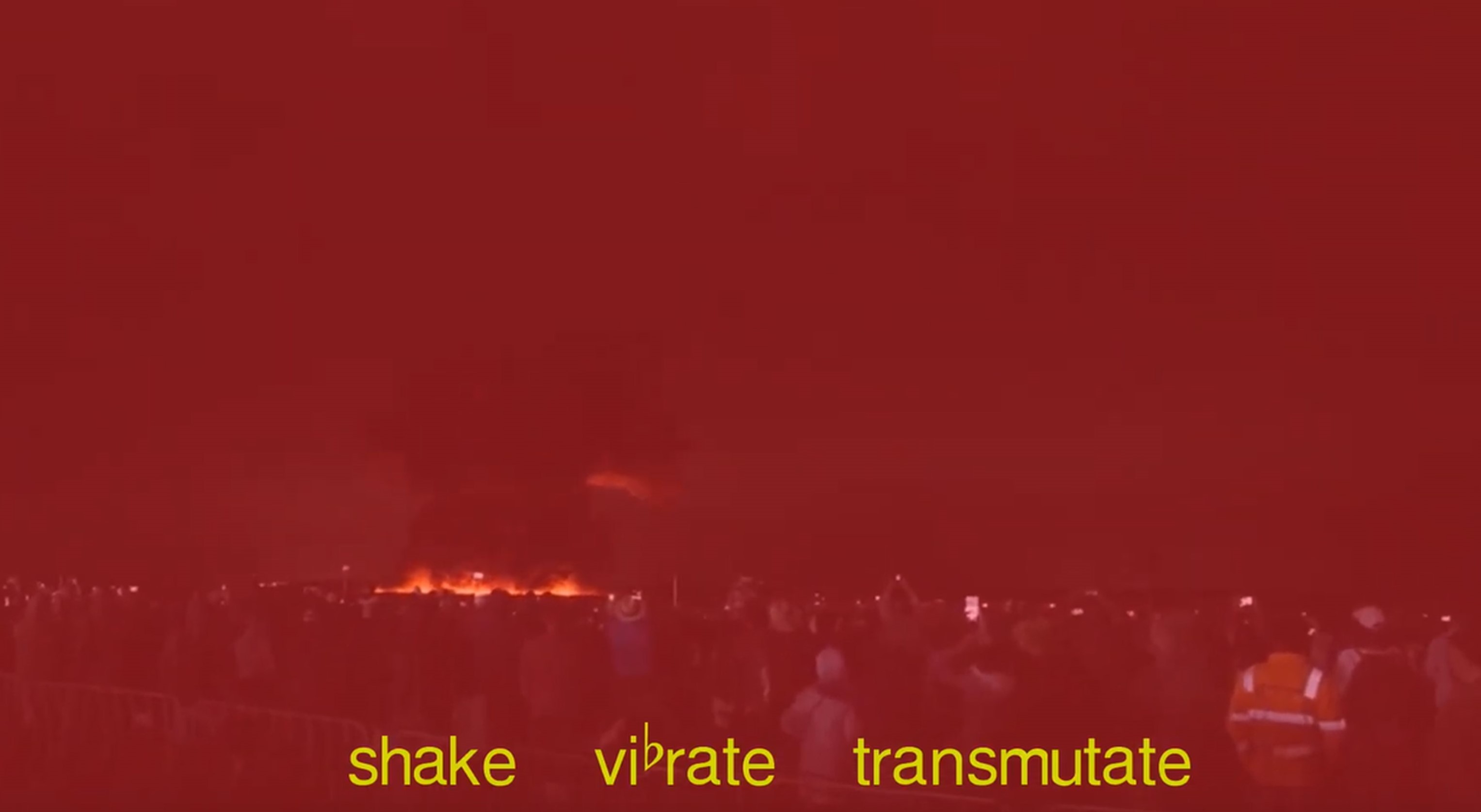
DARCH
DARCH is the collaborative practice of Umulkhayr Mohamed and Radha Patel formed in March 2023, and a culmination of 6 years of work individually, but alongside each other. As DARCH, our practice is rooted in ritual and the sacredness of our connections to land, ancestors, and spirit. Our creative practice begins with holding closed ceremonies, gathering in intentional spaces that invite the guidance of plants, the land, and our ancestors. Alongside this, we explore archives and engage in conversations, between ourselves and with our wider community, both of which help us unearth and shape the voice of our work. These conversations are essential—they are not just dialogue but a form of research, guiding us to understand what our work wants to communicate, embody, and offer to others.
Our process centres on the shared elements of our individual practices—ritual, shrine-making, and relationship to the land. Sound work, storytelling, and open exchange form the foundation of our approach, allowing us to foster a creative space that transcends the human and honours a more-than-human world. This orientation reflects our commitment to animism and ancestral honouring, as well as our commitment to prefigurative politics, that is a deliberate experimental implementation of desired future social relations and practices in the here-and-now.
Artworks:






photo credit: DARCH, ‘Heaven in the Ground’, 2025. Liverpool Biennial 2025 at FACT. Photography by Mark McNulty.
Heaven in the Ground
Physcial Installation and Sound work | 1 Hour and 21 mins | Liverpool Biennial
‘Heaven in the Ground’ tells the story of the earth underneath our feet, and the bedrock as a great connector which holds all histories (prehistoric, colonial, personal) as well as possible futures. The work explores concepts of the afterlife, the relationship between life and death, and the need to acknowledge the labour of other species. DARCH ask us to consider the soil, and the bedrock that holds it up, as a space that is shared equally amongst all species – plants, animals and our ancestors, both human and more-than-human – and one through which we can collectively bring into being a gentler and more compassionate world.
This soundwork consists of an audio story which is a speculative fiction piece that follows the artist’s, Radha and Umulkhayr after they have died and have been buried in the ground separately. As their bodies decompose – returning their spirits to the soil, they seek to find each other and it is the bacteria and insects they meet in the soil who offer to guide them back to each other, at the meeting place of spirits, the Bedrock. And as they guide Radha and Umulkhayr along this journey they talk about life and death, human supremacy, deconstructing faith traditions and weaving together a new/old story of the afterlife that gives us (humans and the more-than-human) another chance to find the sacredness and solidarity that the soil holds. The soundscape that is underscoring the story and is played in the gallery, collages together samples from songs connected to the artists cultural and religious upbringings, sound archives, and original composed elements that make audible the liveness of the Earth, its underground inhabitants and its utopian qualities.
Credits:
Heaven in the Ground was made in collaboration with Javier Sanchez, who lent his knowledge and time to teach DARCH a soil ritual, which was performed to honour the life of the soil in this installation.
Additional voices in the sound piece were performed by (in order of appearance): Lili Evans Williams, Nessi Mahi, Fadumo Hassan, Farah Allibhai, J Beli Friel, Nia Tilley, Aiman Rahim, and Subeer Ali.
The artists would also like to thank Rule of Threes, At The Library, Sefton Library, Rhi Christie and Morgan Dowdal.
The work was co-commissioned by Liverpool Biennial and At The Library, with support from Paul Hamlyn Foundation.

photo credit: DARCH, ‘A Rebirth Ritual’, 2025. Liverpool Biennial 2025 at FACT. Photography by Stuart Whipps.
A Rebirth Ritual
Printed Wall Vinyl
This instructional artwork featuring photographs of ceramic ritual artefacts made by the artists was created for the eneterance of the gallery that hold Heaven in the Ground, as well as Linda Lamignan‘s work, 'We are touched by the trees in a forest of eyes' at FACT Liverpool. The work acts as an invitation to visitors to enter the gallery with the concepts of animism and land based spirituality at the forefront of their mind, as these concepts are amongst the most significant throughlines between DARCH’s and Linda's work.


grief/rage ritual
Film |
9 mins 33 seconds | Arcade Campfa Digital Residency
Grief and rage, despite being characterised as unruly/undesirable emotions, are in fact indicators of health within a global structure of racial capitalism & cisheteronormative patriarchy, which shame us into disconnecting from our bodies in moments of intense feeling, as a way to position our bodies' intense capacity to feel, and are inherently unsafe and unproductive.
Through exploratory conversations and archival research, we created our own grief/rage ritual that explores the relationship between grief and rage, using vocal embodiment and sound as a healing entity. The ritual centres the experiences of both queer people of colour and the more than human, creating a container that holds a process of releasing misplaced shame that is connected to grief and rage and exploring how giving ourselves the space to feel grief and rage may bring about renewed connection to our liberation.
Ruux Kholvawala (soul openers) mask technology
Ceramic Sculptures
The Ruux Kholvawala or ‘Soul Openers’ are 3 ceramic masks handmade by DARCH. They take inspiration from ceremonial masks and are used to communicate with the spirits of earth to translate their pain, grief, joy and teachings to the human world. In performances one mask is worn by Umulkhayr, one by and Radha and the other is offered to the spirits. In this way, we challenge and reject a common narrative in climate activism that the Earth needs 'saving' or that the duty of humans is to ‘save’ the Earth. Instead we believe that we must respect the Earth’s agency by first asking what it wants and respond to its needs before making assumptions.
